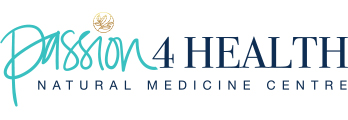Tips to Boost Health by Alkalizing
Have you seen a pool where the acid / base levels haven’t been maintained properly? It’s all too easy to yo-yo from algae overgrowth to burning eyes! As all pool owners would know there is a very narrow range for the measure of acidity vs alkalinity, otherwise known as pH to ensure best results. Using the pH scale, a pH of 1 is very acidic and 14 very alkaline. Battery acid, for example rates a 0 on the pH scale while something like household bleach rates a 13.
The exact same principle applies in our bodies. Our internal environment (cells, tissues, organs and blood) needs to maintain a relatively narrow range for optimum health. The body will in fact, go to very extreme measures to remain in this range. One of the factors that may contribute to Osteoporosis, for example, is a depletion of mineral salts (particularly calcium) from the bones for just this purpose.
Increasingly the maintenance of a slightly alkaline internal environment is being seen as a way to significantly boost our resistance to most modern, chronic diseases. So how can we easily incorporate some of these principles in our lives? Quite simply as the answer turns out.
Tip 1: Balance highly acidic foods with those that are less acidic
The Potential Renal Acid Load (PRAL) calculation gives a relative measure of just how much of an acidic load a food places on the kidneys. The higher this number the more acidic the food. Negative numbers indicate foods that are are alkaline.
The PRAL formula is below:
PRAL = 0.49 * protein (g) + 0.037 * phosphorus (mg) – 0.021 * potassium (mg) – 0.026 * magnesium (mg) – 0.013 * calcium (mg)
As you can see foods that are high in protein are going to be highly acidic. The exception to this are legumes, which due to their high potassium, magnesium and calcium contents are able to off set their hight protein content.
To counter this it is necessary to eat foods that are high in magnesium and calcium, as these are the biggest indicators of alkaline foods. Good examples of foods that are high in magnesium and calcium, yet low in protein, to buffer acid food intake are green leafy vegetables.
Interestingly, parsley is one of the most alkalising foods available. So if you’re intending on a steak don’t forget to eat the garnish too!
Tip 2: Boost mineral intake with celtic sea salt
In many ways this tip follows on from tip 1.
The main minerals the body uses to offset acidity in the body are calcium and magnesium. Where our diet is not high enough in alkaline foods to offset the acid foods we are eating the body takes these minerals from other sources to keep within it’s ideal operating range. We did say at the start that the body goes to desperate measures to keep within this ideal range!
Increasingly people are becoming aware of the link between acid foods and osteoporosis, where mineral salts, particularly calcium, are pulled from the bones. The same applies with magnesium, a vital mineral for many of the reactions that occur in the body.
By taking a pinch of celtic sea salt with 500ml of water three times per day we dramatically boost the amount of free magnesium and calcium available to the body. This provides higher levels of these minerals to the body and spares the mineral salts stored in our bones and other bodily tissues.
Tip 3: Reduce Stress and Maintain a Positive Mental Attitude
It is no surprise that as our lives have become increasingly stressful and busy, so to the rates of chronic disease has skyrocketed. Is this related?
As we have discussed in a previous article one of the key minerals used by the body when stressed, regardless of it’s source, is magnesium. This mineral is also one of the key minerals used by the body in compensating for an overly acidic diet. Suddenly we have two processes; the stress response and the bodies attempt to maintain an stable pH, both competing for the same mineral. This sets off a cycle off spiraling acidity levels and increasing stress levels that can be hard to break.
The maintenance of a positive mental attitude is vital to prevent, or halt, this cycle. In many cases we can change our perspective to view problems as challenges that allow us to grow and learn, a shift in thinking that immediately breaks the stress cycle. In others, the only fall back can be a famous prayer known as the Serenity Prayer:
God, grant me the serenity to accept the things I cannot change,
courage to change the things I can
and the wisdom to know the difference.
Some times we fight battles that we were never intended to fight. A study by Lifeline showed that often the things we stress about are outside our ability to control. If these are the source of our stress we need to establish some method of relinquishing control of these to a higher power, knowing that in so doing we are doing what is best for our health.
